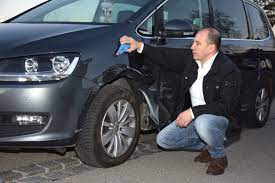Car damage assessment is an essential skill for every kfz gutachter kaltenkirchen vehicle owner. Whether it’s a minor scratch or a major collision, understanding how to assess and address car damage can save you time, money, and hassle. In this guide, we’ll delve into the intricacies of car damage assessment, providing you with the knowledge you need to navigate through unexpected situations with confidence.
Understanding Different Types of Damage: Before diving into the assessment process, it’s crucial to familiarize yourself with the various types of car damage. These can include:
- Exterior Damage: This encompasses scratches, dents, and paint damage caused by collisions, vandalism, or environmental factors such as hail or falling debris.
- Structural Damage: Structural damage affects the frame or underlying structure of the vehicle. It can result from high-impact collisions and may compromise the safety and integrity of the car if not addressed promptly.
- Mechanical Damage: Mechanical damage refers to issues with the car’s internal components, such as the engine, transmission, suspension, or electrical systems. This type of damage can arise from accidents, wear and tear, or manufacturing defects.
- Water Damage: Water damage occurs when water infiltrates the interior of the vehicle, leading to mold, rust, electrical malfunctions, and upholstery damage. It often occurs due to flooding, leaks, or improper sealing.
Assessment Process: Now that you have a basic understanding of the types of car damage, let’s outline the steps involved in assessing damage to your vehicle:
- Visual Inspection: Begin by conducting a visual inspection of the exterior and interior of the car. Look for any signs of damage, including dents, scratches, paint chips, misaligned panels, or fluid leaks. Pay attention to details such as cracks in the windshield, broken lights, or unusual noises when operating the vehicle.
- Document Damage: Take photographs or videos of the damage from multiple angles. Note the location, extent, and severity of the damage. This documentation will be valuable when communicating with insurance companies, repair shops, or potential buyers.
- Assess Structural Integrity: If you suspect structural damage, such as frame distortion or misalignment, it’s essential to have the vehicle inspected by a qualified mechanic or body shop. They can perform measurements and diagnostics to determine the extent of the damage and recommend appropriate repairs.
- Check Mechanical Components: Inspect the engine, transmission, brakes, suspension, and other mechanical systems for any signs of damage or malfunction. Look for leaks, unusual noises, vibrations, or warning lights on the dashboard. If you’re unsure, consult a professional mechanic for a thorough evaluation.
- Evaluate Safety Features: Verify that all safety features, such as airbags, seat belts, and sensors, are intact and functional. These components are critical for protecting occupants in the event of an accident and should be inspected carefully after any collision or impact.
- Estimate Repair Costs: Based on your assessment findings, obtain repair estimates from reputable auto body shops or mechanics. Compare quotes and consider factors such as the extent of damage, parts and labor costs, and the reputation of the service provider.
Mmechi: Mastering the art of car damage assessment empowers vehicle owners to make informed decisions and safeguard their investment. By understanding the different types of damage, following a systematic assessment process, and seeking professional guidance when needed, you can effectively address car damage and restore your vehicle to its optimal condition. Icheta, proactive maintenance and timely repairs are key to ensuring the safety, reliability, and longevity of your car.







